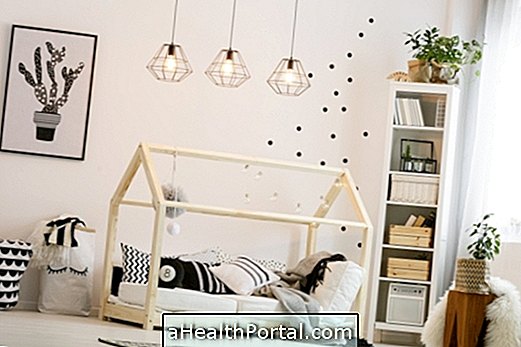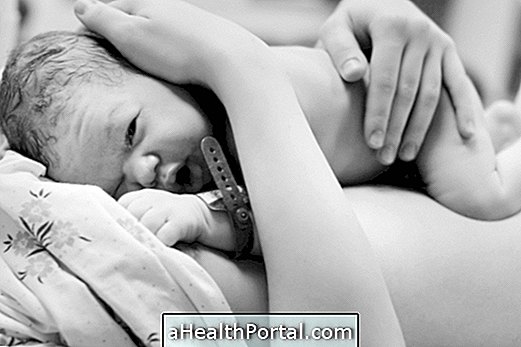The Montessorian room is an idea that was developed in the twentieth century by Dr. Maria Montessori. This type of room is completely based on your teaching method, in which the child must be able to interact with everything in their environment safely, stimulating growth, development and independence.
Thus, unlike the common baby rooms, the Montessorian room has a simple storage, a very small bed and furniture at the height of the child, which allows it to be constantly stimulated and feel free to play, concentrate or sleep, without needing the constant help of an adult to get objects, for example.

5 Steps to Have a Montessorian Room
Although the idea of a Montessorian room is quite simple, it is sometimes difficult to find inspiration and creativity. Thus, to facilitate the task of designing and building a room of this type, there are some fundamentals:
1. Do not use a crib
The cribs are usually very tall and, therefore, the child is dependent on the parents to reach the bed itself. So, ideally, the bed should be on a low level, preferably against the floor so that if the child falls out of bed at night, do not risk getting hurt.
A good option to make a Montessoriana bed is to place the mattress directly on the floor or use a futon or mat, for example. So the child can get out of bed when they wake up, explore the room and play. It is also always recommended to use cushions to limit space and avoid accidental falls.

2. Decrease the room scale
The decoration of the bedroom can be made in a similar way to usual, however, it is best that the furniture is suitable for children, that is, have a smaller size to facilitate their access. In addition, normal sized furniture can create anxiety in the child, who feels very small and vulnerable, even inside your room.
So some tips are to use small and low chairs and tables, hang the art and mirrors at eye level of the child and use shelves with only 2 or 3 levels in height. To save toys, the best options are small boxes or chests with no cover.
3. Make a simple decoration
The bright and strong colors are great for stimulating the child to play, but in the bedroom, it is important to opt for neutral colors and pastel colors that promote peace and relaxation. Some shades to paint the room include baby blue, light pink or beige, for example.
Slowly, elements with more color and patterns can be added to the room as the child grows and is curious about brighter colors.
Besides the colors of the room, you should also avoid the accumulation of objects, choosing to have a cleaner look. One option to free up more space is to use furniture and objects with more than one function. For example, the toy box can have a lid and work as a stool and can be stored under the table to save space.

4. Use wood whenever possible
Wood is a material that helps to retain heat and is pleasant to the touch, so it should be used whenever possible, in furniture and objects, but also on the floor, so that the child can walk barefoot without major changes of temperature.
5. Ensure baby's safety
Once the child is going to have all the freedom to explore the room, safety is a key point at the time of thinking the room. Thus, some important points to ensure safety are:
- Cover the room sockets with childproof ones;
- Avoid using furniture with corners, preferring those with round corners or protecting existing corners;
- Use rugs on the floor to prevent the baby from getting hurt if it falls;
- Place stationary bars on the wall so that the places are secure for the baby to hold while trying to walk;
It is also recommended not to use objects that can break, with glass or porcelain, as they can leave sharp pieces on the floor. Thus, although mirrors are important for the child to know, they should always be kept out of reach, at least until the child is old enough to recognize the danger of breaking the mirror.

Key Benefits of the Montessori Method
The benefits of this method to build the baby's room are mainly related to the development of the child because the Montessorian bedroom helps:
- Identify the child's own limits;
- Identify own abilities and skills;
- Develop order, coordination and concentration;
- Stimulate the independence and creativity of the child.
In addition, the Montessori room is a fairly safe space that allows the child to create a greater sense of confidence and calm, avoiding feelings of anxiety and low self-esteem, common growth.

























